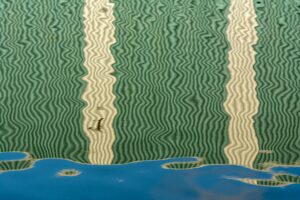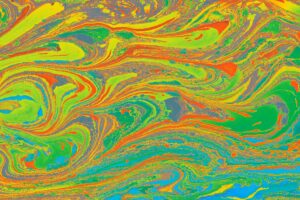Through the ages, many artists and writers have turned to psychedelics in an attempt to unlock their full creative potential. These substances, which include powerful chemicals like LSD, psilocybin mushrooms, and even cannabis, have long been associated with altered states of consciousness. But have you ever stopped to wonder how these powerful substances affect creativity, imagination, and artistic expression?
Although the relationship between creativity and psychedelics is both complex and multifaceted, many artists claim that tripping allows them to tap into new and otherworldly realms of the imagination. There’s no doubt that substances like LSD can induce a profound change in brain activity, ultimately leading to a visionary experience. But how exactly do psychedelics trigger such a unique and powerful altered state?
In order to understand the impact of psychedelics on the imagination, we must first explore the ways in which these substances impact the brain. When a person ingests a psychedelic substance, it has a dramatic effect on the brain’s chemistry. This chemical ‘overhaul’ triggers heightened sensory perception, meaning that the person is likely to get completely lost in their surroundings.
These new experiences might inspire an artist to create something truly unique and extraordinary, drawing on these newfound feelings and perceptions. In fact, many artists and writers have credited their most profound work to the insights they gained while under the influence of psychedelics. For example, The Beatles claimed that their revolutionary album, ‘Sgt. Pepper’s Lonely Hearts Club Band,’ was inspired by their experiences with psychedelics, particularly LSD.
So what’s happening on a neurological level when someone takes a psychedelic substance? Research suggests that psychedelics work by disrupting the brain’s default mode network (DMN), which is responsible for maintaining a sense of self and coherence. In essence, this means that the brain’s normal, organized patterns of activity are temporarily suspended.
As the DMN becomes less active, it makes way for new and unique connections to form between different areas of the brain. This can cause a person to experience a wide range of unusual and extraordinary feelings, sensations, and thoughts. They might even be flooded with memories and emotions that have been buried deep inside them for years.
It’s this temporary rearrangement of the brain’s connections that some believe can lead to enhanced creativity. The disruption of the brain’s default activity allows for the formation of new and unique connections, which can lead to novel thoughts and ideas. This could potentially provide an artist with the raw material they need in order to create something truly breathtaking and original.
But the benefits of psychedelics aren’t just restricted to experienced artists. Research has found that even those with no background in the arts can experience a significant boost in creativity following the use of psychedelic substances. The study in question, which was conducted by the University of Amsterdam, found that people who were given small doses of psychedelics experienced a marked increase in both convergent thinking (the ability to identify a single solution to a problem) and divergent thinking (the ability to think creatively and generate multiple solutions).
It’s worth noting that there are risks associated with the use of psychedelics, and they’re not for everyone. The substances in question are powerful, and can alter a person’s state of mind in profound and unpredictable ways. It’s always advisable to approach these substances with caution and to be aware of the potential dangers involved.
Nonetheless, the impact of psychedelics on creativity and imagination is a fascinating area of study. While more research is needed to determine the precise mechanisms at work, it’s clear that these substances have the capacity to unlock new dimensions of the human mind. The profound effect of these substances on the creative process remains a source of wonder and intrigue for artists, scientists, and the general public alike.




